Unleash Your Creativity: Generate AI Images Locally Without a GPU
Written on
Creating AI Images with Midjourney Style
Now you can easily produce Midjourney-style AI images right on your personal computer, and the best part? You don’t need a GPU to make it happen! In this guide, I’ll walk you through the steps and demonstrate how straightforward it is to get started.

Imagine crafting stunning AI visuals similar to those trending on social media. The myth that high-performance GPUs are essential for this task is simply not true. Your reliable laptop or desktop CPU can handle it! While it might require a bit more time, the end results will be incredibly rewarding. So, why not dive into this creative endeavor? No specialized gear is needed!
Requirements to Get Started
To embark on this journey, you’ll only need a fundamental understanding of Python. The instructions provided here are tailored for Windows, but with minor tweaks, they can be adapted for Linux or Mac systems.
Installation Process


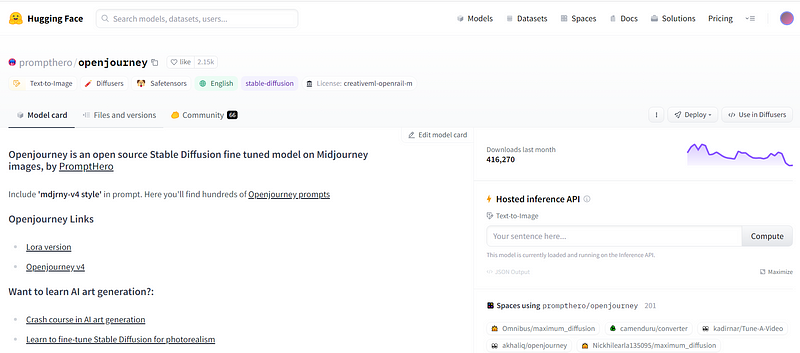
Creating Your Image Generation Script
Let’s put together a simple script that will generate images based on prompts. Start by creating a new project in PyCharm. Open the application and initiate a new project:
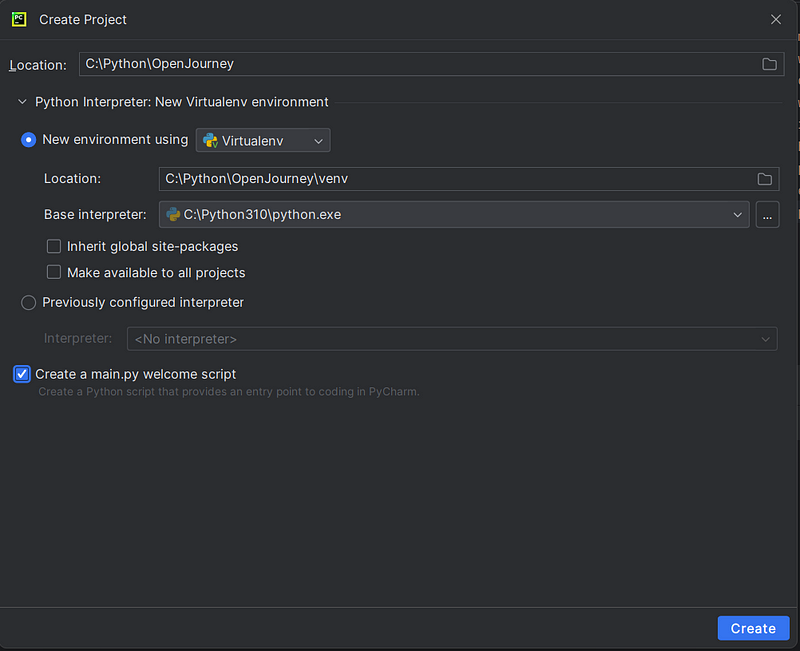
You can name your project 'OpenJourney'. Ensure the option to create a ‘main.py’ welcome script is selected, then replace its content. Once your project is set up, you should see the following files:
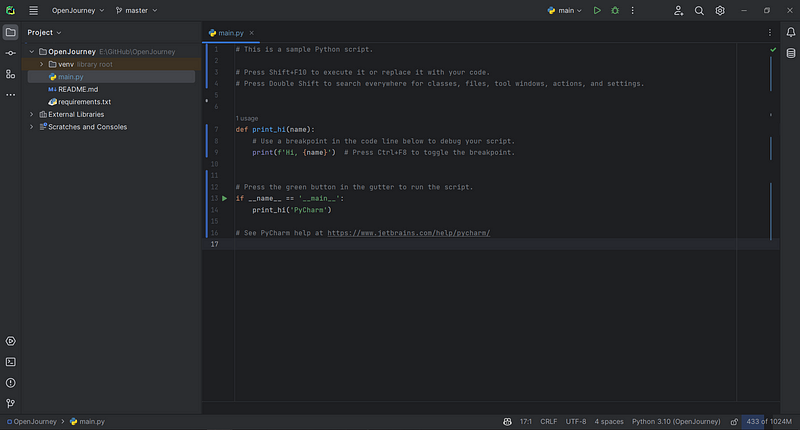
Now, let’s update the ‘main.py’ file with this code:
from diffusers import StableDiffusionPipeline
# Load the model
model_id = "prompthero/openjourney"
pipe = StableDiffusionPipeline.from_pretrained(model_id)
pipe = pipe.to("cpu")
# Prompt
prompt = input("Enter a prompt: ")
prompt += ' mdjrny-v4 style'
# Generate image
image = pipe(prompt).images[0]
image.save("image.png")
This code allows us to generate an image from the provided prompt. Here’s a brief breakdown: we load the model using the StableDiffusion pipeline from Hugging Face, specifying to use the CPU. We then ask for the prompt and add ‘mdjrny-v4 style’ to it, which is essential for producing images in the Midjourney style. Finally, the image is generated and saved to a file.
Before running the script, we’ll need to install a couple of external libraries via PIP:
pip install diffusers transformers accelerate
You can do this in the PyCharm command line:
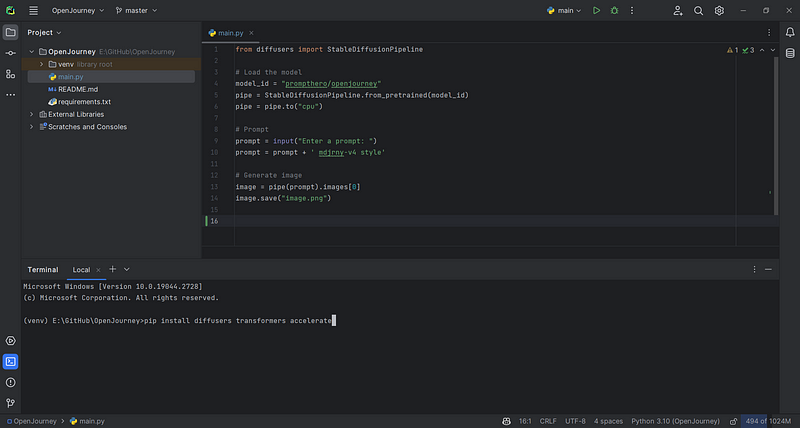
Additionally, we need to install PyTorch, a crucial library for AI applications in Python. This can also be done with PIP:
pip install torch torchvision torchaudio
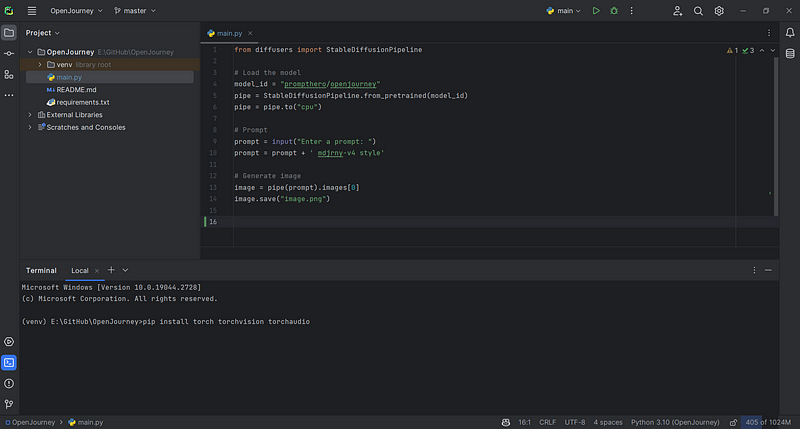
This will set up PyTorch with CPU support, which is what we’ll be using in our script, though CUDA support is available for those with NVIDIA GPUs.
Running Your Script
Now it’s time to run your script and create your first image! Click the play button in PyCharm:

Your code will start downloading the necessary model files, and then it will prompt you for input:
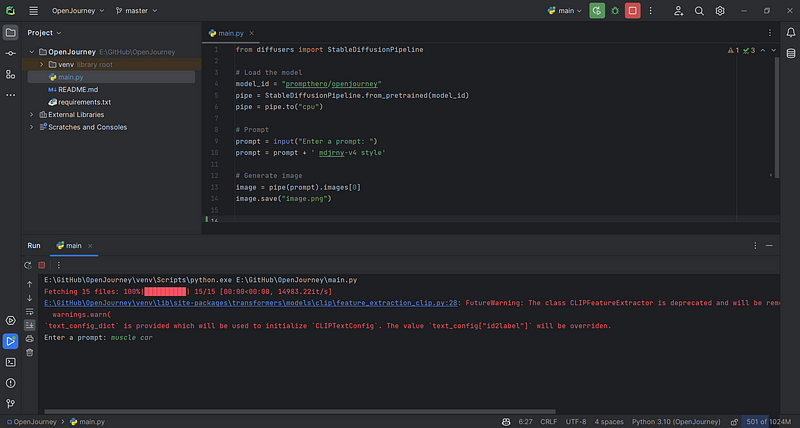
After entering your prompt, like ‘muscle car’, the image generation will begin:
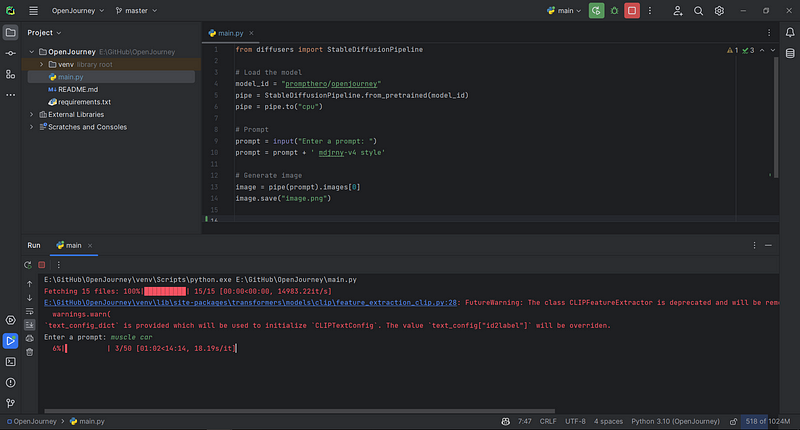
Within 10 to 15 minutes, depending on your CPU, you'll receive a beautifully generated image:
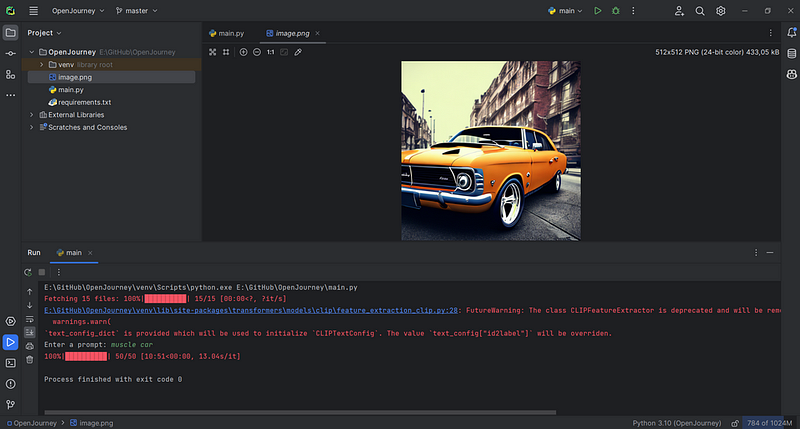
Congratulations! You've successfully created a Midjourney-style image locally on your computer. While it may not have been instantaneous, you now have the ability to generate any AI images you desire.
Conclusion
AI-generated images are accessible to everyone; all it takes is the right tools. In this guide, we explored how to create a Python script for generating Midjourney-style visuals. You can further enhance this script by utilizing other models available on Hugging Face that are compatible with the diffusers library (like OpenJourney).
For the complete source code, visit:
Feel free to share your creations in the comments; I’d love to see your artistic outputs!
Explore more intriguing articles:
- Python Shorts — NLP Sentiment Analysis and Text Summary
- Top 5 Projects to Do on a Raspberry Pi
- Top 4 Open Source BaaS Platforms
Also, don’t forget to sign up for my free newsletter to stay informed of new posts!
In this beginner's tutorial, learn how to create AI-generated images from text using MidJourney, perfect for those just starting out.
Discover how to use your own photos with MIDJOURNEY to produce unique AI images, enhancing your creative projects.